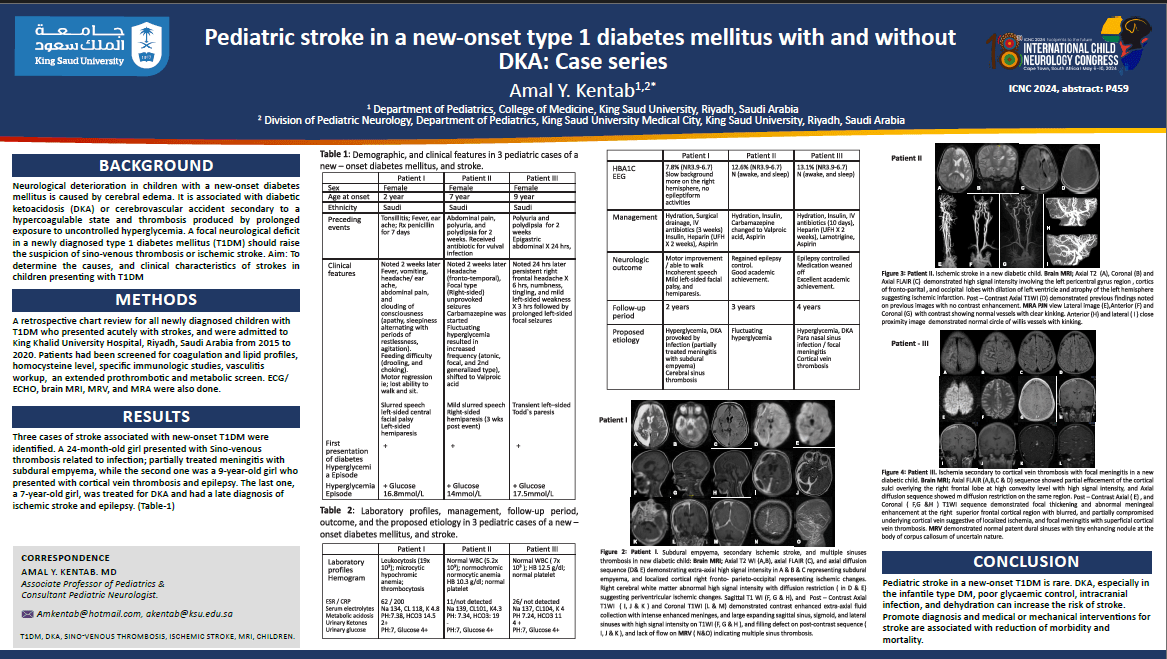Pediatric Stroke In A New-onset Type 1 Diabetes Mellitus With And Without DKA: Case Series
Background: Neurological deterioration in children with a new-onset diabetes mellitus is caused by cerebral edema. It is associated with diabetic ketoacidosis (DKA) or cerebrovascular accident secondary to a hypercoagulable state and thrombosis produced by prolonged exposure to uncontrolled hyperglycemia. A focal neurological deficit in a newly diagnosed type 1 diabetes mellitus (T1DM) should raise the suspicion of sino-venous thrombosis or ischemic stroke. Aim: To determine the causes, and clinical characteristics of strokes in children presenting with T1DM Methods: A retrospective chart review for all newly diagnosed children with T1DM who presented acutely with strokes, and were admitted to King Khalid University Hospital, Riyadh, Saudi Arabia from 2015 to 2020. Patients had been screened for coagulation and lipid profiles, homocysteine level, specific immunologic studies, vasculitis workup, an extended prothrombotic and metabolic screen. ECG/ ECHO, brain MRI, MRV, and MRA were also done. Results: Three cases of stroke associated with new-onset T1DM were identified. A 24-month-old girl presented with Sino-venous thrombosis related to infection; partially treated meningitis with subdural empyema, while the second one was a 9-year-old girl who presented with cortical vein thrombosis and epilepsy. The last one, a 7-year-old girl, was treated for DKA and had a late diagnosis of ischemic stroke and epilepsy. Conclusion: Pediatric stroke in a new-onset T1DM is rare. DKA, especially in the infantile type DM, poor glycaemic control, intracranial infection, and dehydration can increase the risk of stroke. Promote diagnosis and medical or mechanical interventions for stroke are associated with reduction of morbidity and mortality.
Amal Kentab
King Saud University
Saudi Arabia

Amal Kentab
King Saud University
Saudi Arabia